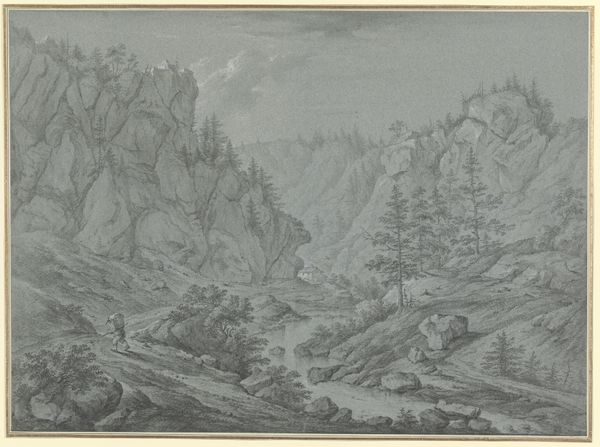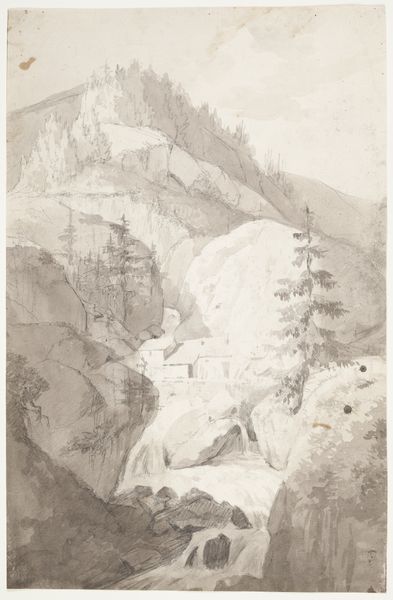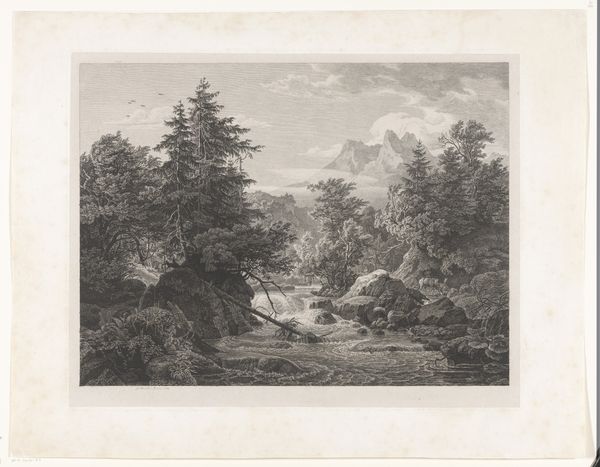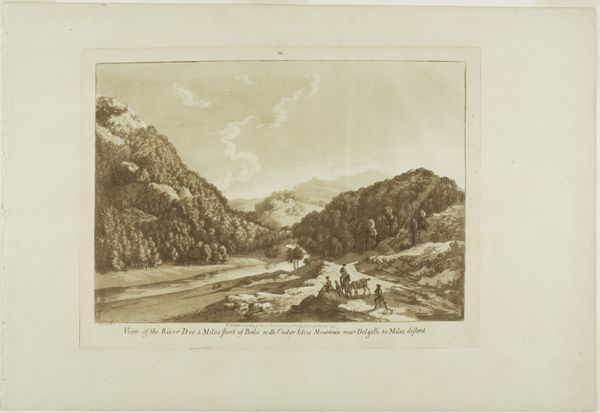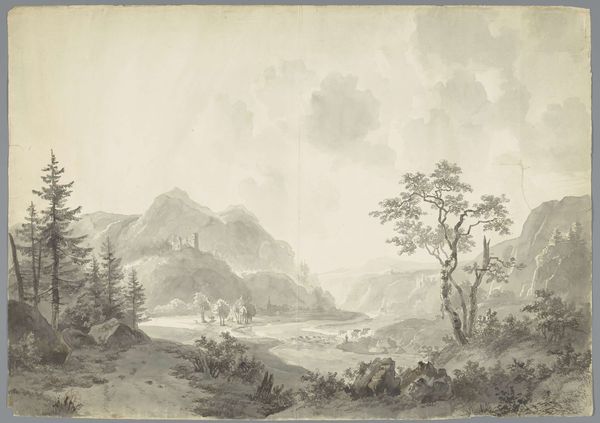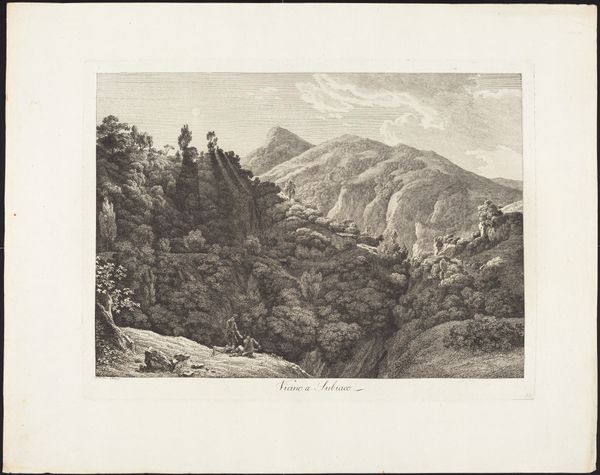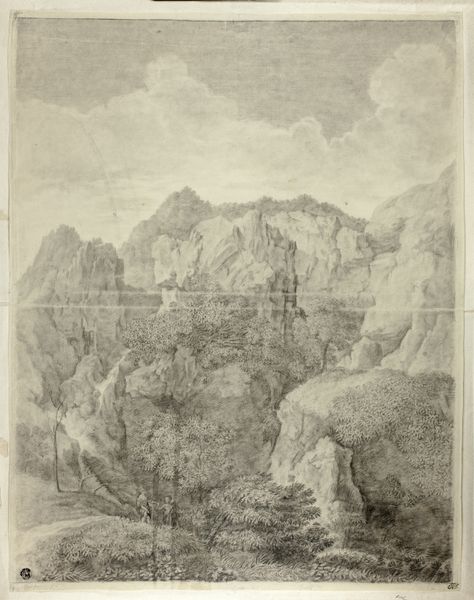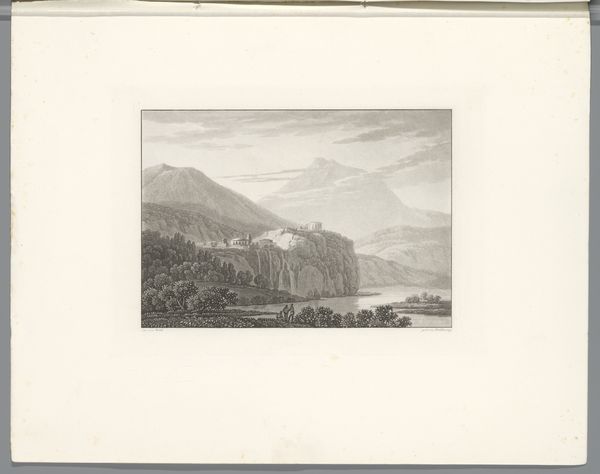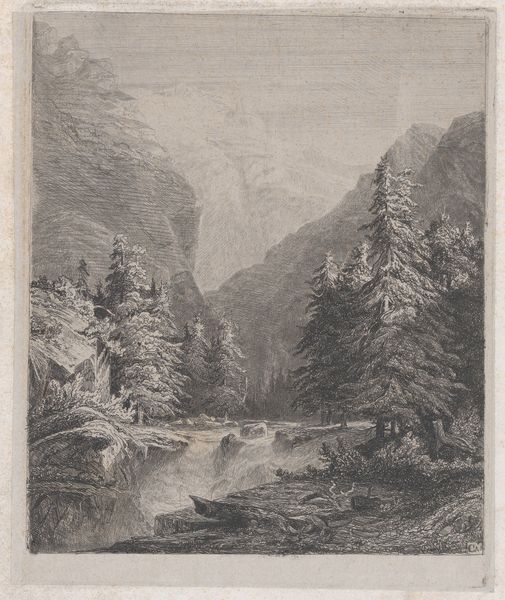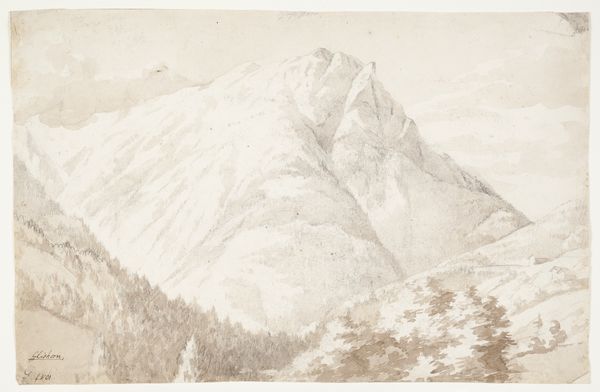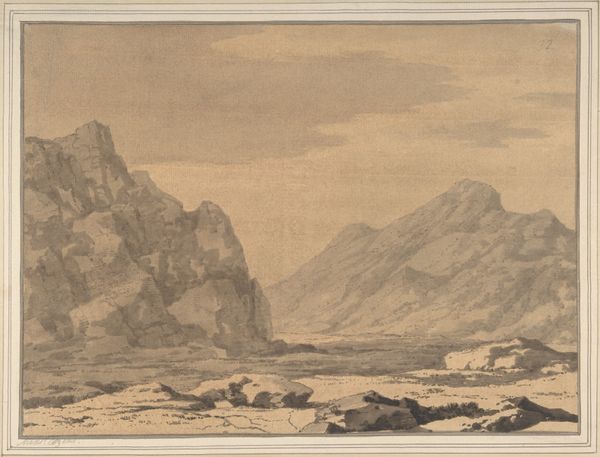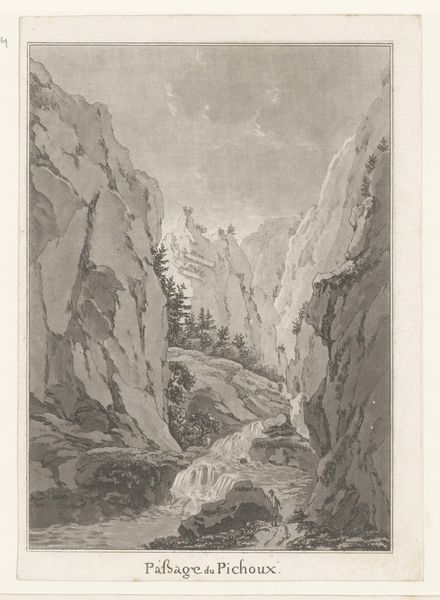
drawing
#
drawing
#
landscape
#
romanticism
Dimensions: 228 mm (height) x 299 mm (width) (bladmaal)
Editor: Here we have J.F. Clemens' 1801 drawing, “Kalke af Chiparts udkast til balletten 'Lagertha'," a landscape scene done in, what appears to be, graphite. It’s striking how this sketch evokes a sublime and almost theatrical atmosphere despite being a preliminary sketch for a ballet. How would you interpret this work within its historical context? Curator: Indeed, the theatrical element is key. The sketch functioned within a system of patronage and artistic exchange. The ballet itself would have been a carefully constructed piece of political theatre, projecting specific ideas about Danish history and national identity. Clemens's drawing reflects this; the grandeur of nature serves as a backdrop to Lagertha’s story. Consider how landscape painting at this time served to define and promote notions of national territory and character. Do you think the choice to portray nature in this awe-inspiring way would help further legitimise Lagertha’s power? Editor: That makes a lot of sense. Seeing it as part of this larger theatrical and political presentation sheds light on the grandiosity I noticed initially. Were there specific visual or stylistic conventions popular at the time that you see echoed here? Curator: Absolutely. We see echoes of Romanticism beginning to take hold: the emphasis on dramatic scenery, evoking feelings of awe. But also, think about the institutional role: drawings like these also circulated amongst artists, serving as models and influencing artistic production more broadly. What do you see here that reminds you of that larger movement of landscape in the shaping of Danish art, the public sphere, and in staging the national character? Editor: That makes me reconsider my initial response. Knowing that it’s a cultural artefact contributing to institutionally supported nationalism is significant. Curator: Precisely. Art rarely exists in a vacuum. Editor: Thank you, that helped contextualise my understanding a lot.
Comments
No comments
Be the first to comment and join the conversation on the ultimate creative platform.
